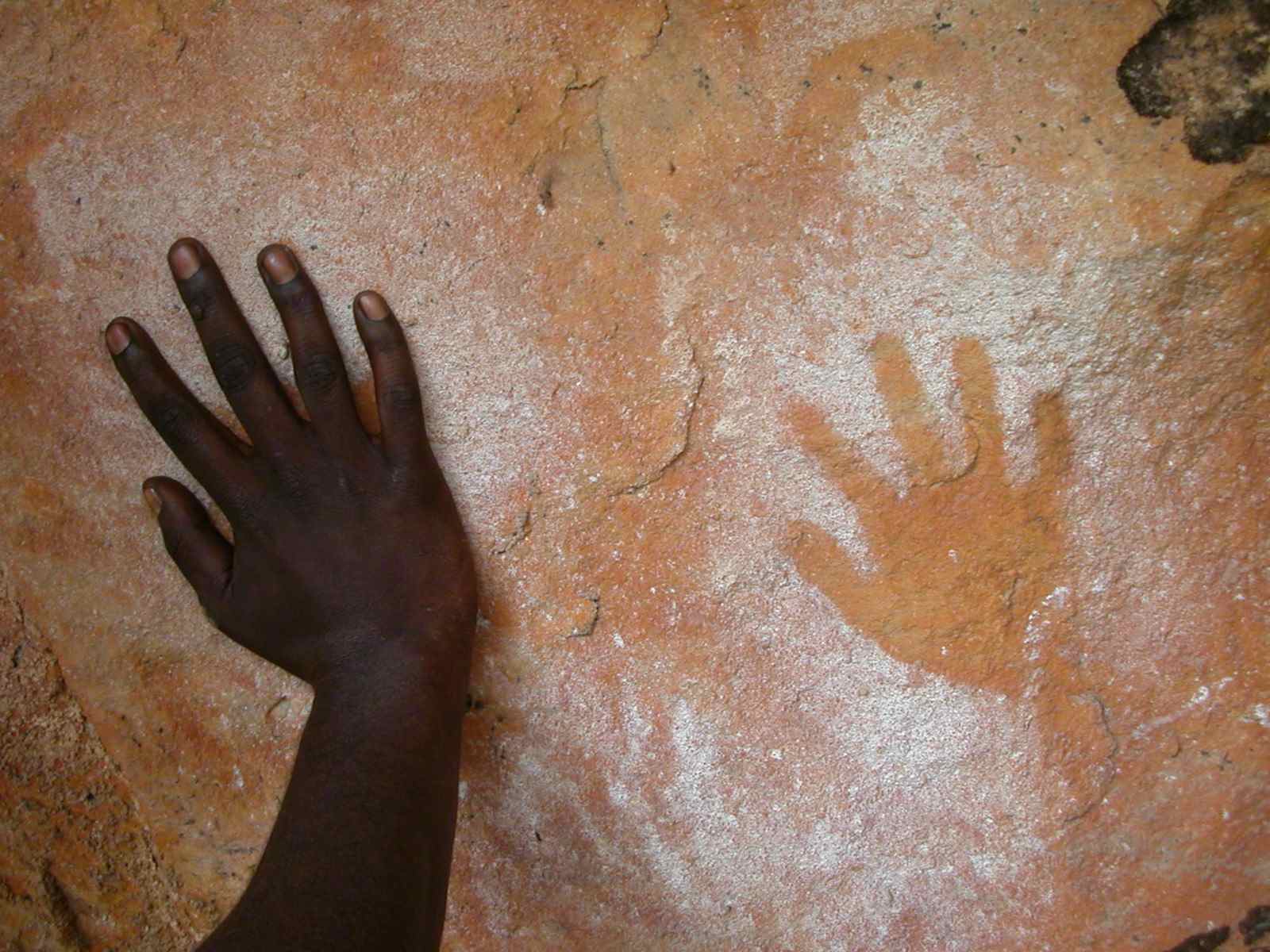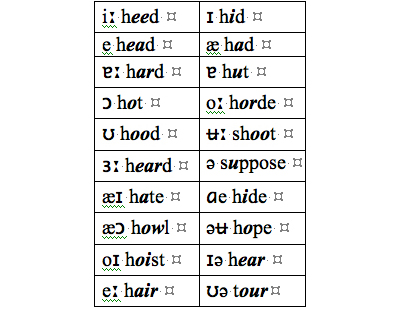Ma! Karri-wokdi Kundjeyhmi!
OK, let's speak Kundjeyhmi!
February 16, 20121. Getting Started

This is the first post for Jabiru students and agency employees learning the Australian languages Kundjeyhmi and Kunwinjku, which are spoken in Kakadu National Park and Western Arnhem Land. Other people who live and work in Western Arnhem Land might also be interested in these lessons. Whilst they are in the form of blog posts in English, there will be some posts from time to time which will be exclusively in Bininj Kunwok dialects. You can ask questions or make comments in response to these lessons and I will attempt to answer your questions.
What does 'Bininj Kunwok' mean? There are a number of Aboriginal languages spoken in Western Arnhem Land today. You will already know the names Kundjeyhmi and Kunwinjku, but in addition to these two, there are also four other varieties (call them dialects) of the same language. These varieties are Mayali, Kuninjku, Kune and Kundedjnjenghmi. You can find more information about the six Bininj Kunwok dialects here. And you can see the map of their locations here. These are all the same languages, just different dialects. If you speak in one, the people who speak a different dialect will still understand you. Linguists define dialects along the lines of 'mutual intelligibility'. Bininj will have a range of different views on these dialect names. We need a way to refer to these varieties as one group and so linguists have coined a new name after talking to Bininj (Aboriginal people) about what might be an appropriate collective name. Bininj in some cases use the name of their own language variety to refer to all the other dialects too but this doesn't always go down well with the speakers of another dialect. Some people say that all the dialects are really 'Mayali' and others say that all the varieties should be called 'Kunwinjku'. No collective name is perfect, but Bininj Kunwok is the name we will use to refer to all the varieties mentioned above when we need a collective name. Otherwise, just use the name of the variety you are learning, Kundjeyhmi or Kunwinjku. The learner's guide material presented here is a general course where I have tried to keep the technical grammatical terms to a minimum. If you want to read a more technical grammatical description of Bininj Kunwok see this:
Evans, Nicholas (2003) Bininj Gun-wok: A pan-dialectal grammar of Mayali, Kunwinjku and Kune. [2 volumes] Canberra: Pacific Linguistics
2. The sounds and symbols that represent them.
Vowel Sounds in the English Language
We need to say something about the difference between the sounds of a language and the symbols that represent them (what linguists call phonemes and orthography). Depending on the accent, the English language can have anywhere from 11 to 20 vowel sounds. The English alphabet only has 5 letters that are used exclusively to represent these many vowels

It is important to understand the difference between the letters and the sounds they represent. In Australian English there are about 20 vowels (includes some diphthongs – combinations of two vowels in one unit), represented by individual or combinations of five roman letters (a,e,i,o,u). Examples of these are in the table above.
But in Kundjeyhmi and Kunwinjku there are 5 vowels represented by 5 letters, a, e, i, o, u.
kakkak
dedded
kikkik
bobo
kukku
Bininj Kunwok orthography
Use these letters ONLY:
VOWELS
a, e, i, o, u
DIPHTHONGS
iw, ew, aw, ow, ey, ay, oy, uy
CONSONANTS
b, bb ,d, dd, dj, djdj, h, (g)/k, kk, l, m, n, ng, nj, r, rr, rd, rdd, rl, rn, w, y
There is no letter g except when it appears as part of the digraph symbol ng which is what linguists call a velar nasal.
Some of these letters have the same sound as they do in English; others do not. As you can see from the list above, some combinations are not found in English, e.g. nj, iw. These may cause problems until you get used to the system.
Note that in writing Aboriginal languages each sound is always written in the same way and letters (single and double) stand for one and only one sound in a given position. This means you can make a reasonable attempt at pronouncing new words once you know the sound that goes with each letter.
Some of the letters are called vowels (a,e,i,o,u). Some are called DIPHTHONGS (aw, ay, ew, ey, iw, oy, ow, uy. The rest are called CONSONANTS. We will discuss the vowels first, then the diphthongs, then the consonants. But first, here is an overview of the whole set of letters together with rough English equivalents.
VOWELS
a as in about, but
e as in bed or French e
i as in bit
o as in pot or Italian o as in Dio
u as in put
DIPHTHONGS
aw as in house
ay as in 'ay-ay, captain'
ew (no English equivalent - nearest to the Adelaide pronunciation of 'hell')
ey as in hey, they
iw (no English equivalent - nearest to the Adelaide pronunciation of 'hill')
oy as in boy
ow as in oak, choke
uy as in Nhulunbuy
CONSONANTS
b as in bank
d as in dog
dj as in jump
h as in Cockney wha' for 'what'
k as in get
l same as in English
m as in mad
n as in nose
ng as in sing
nj as in canyon.
r as in rice
rr as in Scottish carry, or 'sloppy' pronunciation of 'butter'
rd as in American pronunciation of 'harder'
rl as in American pronunciation of Harlem
rn as in American pronunciation of harness
w as in wait
y as in yell
Long consonants are written double, e.g. bb, dd, djdj. These have no English equivalent.
LONG STOPS (consonants)
short b k d rd dj
long bb kk dd rdd djdj
Dialect Differences
What kind of differences are there between Kunwinjku, Kundjeyhmi and some of the other Bininj Kunwok dialects?
The grammatical differences are minor. The vocabulary differences are more noticeable. For example, look at the following:
English: Why did he go? He went (for) magpie geese.
Kundjeyhmi: Njanjukken ba-wam? Bamurru ba-wam.
Kunwinjku: Njaleken wam? Manimunak wam.
Kuninjku: Njaleken wam? Murnubbarr wam.
Don't worry too much about these differences for the time being. You can ask about these kind of differences as comments to this post. If you want to read some more about dialect differences, have a look here.
3. Examples
Vowels- click on the audio link to hear pronunciation.
-Yi-biddjuyme ba yi-wokbekkan.
A ngabbard father
nga-yawan 'I'm looking for it/him/her'
E
bedberre 'theirs, for them'
dedded red-collared lorikeet
I
mimih rock spirit
bininj man, human being
O
dolobbo bark of stringybark tree
bobo goodbye
U
bun I'll hit you
kukku water
Consonants-
b ba-bidbom 'he/she climbed up'
d doydoy various great grandparents: FFM, FMF, MFF, MMM(B) (where F= father, M= mother, B= brother)
dj ngadjadj 'mother's brother' Note: this sound is not the same as that represented by the English letter 'j'. Linguists call it a voiced palatal plosive. It sounds like this.
h Kundjeyhmi
k kek 'is that so, I see'
l lablab 'spotted nightjar' (bird)
m kun-mim 'eye, seed'
n nin 'grass wren'
ng ngalelek 'little corella'. This sound often occurs word or syllable initially. It doesn't in English. It sounds like this.
nj kun-njam. Linguists call this sound a palatal nasal. It sounds like this.
r Rol 'a clan name'
rr barri-wam 'they've gone' birri-wam (Kunwinjku). This sound is an alveolar tap. It sounds like this.
rd 'knee' kun-bard. Remember that 'd' and 'rd' are two different sounds. It sounds like this.
rl kun-karlang (Kunwinjku). Just remember that 'l' and 'rl' are two different sounds. It sounds like this.
rn ka-marnbun. Remember that 'n' and 'rn' are two different sounds. It sounds like this.
w wolewoleh 'afternoon
y yekke 'early dry season'
Ma, bonj. OK that's enough for this first lesson.
Look for a Bininj language teacher to help you with your learning.
Yi-yawa bininj dja daluk nawu ngundi-bidyikarrme kun-wokken.